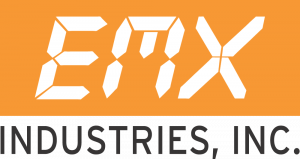If your locations feature any of the five gate types covered under the UL 325 Standard, it’s required that you utilize two means of monitored, independent protection in entrapment zones.
These zones might include the space behind a gate where it swings open (called the swing arc), the space below a sliding gate, and/or the space just in front or behind a gate. Retroreflective photoeye installation — as well as safety edge installation — qualifies as means of protection under UL 325. These solutions, among others, help prevent automatic gates from opening or closing on vehicles or people.
Get refreshed on UL 325: Explore what the standard covers, gate types, classes, and more.
However, because retroreflective photoeyes feature delicate sensors, lenses, and reflectors, not to mention they are often positioned in exterior environments or inside facilities with adverse conditions and photoeye installation challenges, their functionality and accuracy can be put at risk. This is because of the nature of how these photoeyes are designed and how they work. At EMX, we take these challenges into consideration and design our retroreflective photoeyes with rugged housings and enclosures to prevent these types of ongoing issues.
A retroreflective photoeye features the transmitter and receiver in a single unit — as opposed to separate with thru beam photoeyes. The transmitter sends an infrared beam to the reflector unit, which bounces back to the receiver. If something obstructs that beam, a signal is sent to the operator control to stop or reverse the action of the gate to prevent damage and/or harm. Here, we’ll explore a few of the adverse conditions that can affect this operation and how to resolve them.
Recommendations for Common Photoeye Installation and Environmental Challenges
- Photoeye–Reflector Alignment — When setting up a retroreflective photoeye, a cone of light emits on the opposite wall or surface. This cone is designed to help installers position the reflector, which should go in the exact center of the light cone. However, it can be difficult to do this with precision and because the installer must refer visually to LED lights on the photoeye. In this instance, the Haush Method should be used to help ensure the reflector is in the ideal position. It’s a simple and quick five-step process that helps installers find the precise location.
- Fog & Rain — Condensation on the photoeye lens can result in inaccurate performance. While this can’t be avoided in some circumstances, using a surface treatment on the lens will help condensation to roll off — allowing the infrared beam to emit from the transmitter without any interference. This surface treatment may need to be reapplied from time to time based on the conditions and precipitation at your locations.
- Dust Accumulation — Some environments produce a heavy amount of dust, either due to operations in the facility or traffic passing by and through gates. In these instances, it’s ideal to use retroreflective photoeyes that have rugged housings and feature hoods over the photoeye lens. While these hoods won’t be able to prevent all dust from accumulating on the lens, they will be able to protect it from some airborne particulates as it settles. Facility managers and workers should still periodically check the photoeye and keep it clean.
Two Retroreflective Photoeye Installation Solutions
1. IRB-RET
View photoeye | Download spec sheet
As one of our most flexible and adaptable retroreflective photoeyes, the IRB-RET meets UL 325 requirements while also providing the rugged construction needed for outdoor, high-traffic, and dirty or dusty environments. And because it’s compatible with a range of monitoring interfaces, it can be used on systems subject to UL325 and on legacy systems, simplifying the number of photoeyes needed throughout one or more facilities. Key advantages of the IRB-RET include:
- Universal design for a variety of monitored operators (6 interfaces)
- Rugged NEMA 4X enclosure and hoods on photoeye and reflector
- An operating range of up to 60 feet for virtually any space
- Works with a range of different power supply options
NIR-50-325
View photoeye | Download spec sheet
Designed specifically for 10k monitoring interfaces, the NIR-50-325 not only meets UL325 requirements but comes in a more compact design while still providing the rugged construction and accessories needed to protect the unit. It is also more compatible with a wide range of voltages, making installation even easier in environments where power supply differs. Key advantages of the NIR-50-325 include:
- Flexible use with 10K or normally closed monitoring
- Comes with protective hood, mounting bracket, and hardware
- An operating range of up to 50 feet for different spaces
- Options for shorter distance (NIR) and non-UL325 needs (NIR 50) available
Protective Solutions Designed with the Installer in Mind
EMX Industries, Inc. has been manufacturing advanced photoeye solutions for access control needs for decades. Our team works closely with every client to understand their unique facility and photoeye installation requirements, providing only the most efficient and functional solution to ensure their employees and customers are protected. Whether you’re looking for greater control in your environment or you’re sourcing solutions for a new facility, our team is available to assist. Connect with us to discuss your goals and learn how we can help.

